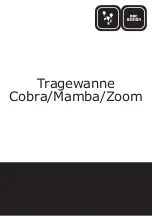
Appendix A Radio Connections
Appendix
A
Radio
Connections
Overview
This appendix provides radio connection information from your AEA data controller to approximately 400 different
models of amateur transceivers.
Each radio listed references a connection figure and possibly a not on connections. Notes are below on this page.
Connection figures appear following the table of radios. All PIN type wiring connections are viewed from
wiring/solder side of plug.
The wire colors used on the diagrams refer to the wires in the radio cables supplied with your AEA data controller.
The standard minimum configuration will allow operation of all HF modes with your radio set for SSB operation.
When wiring information refers to FSK connections, these connections allow you to operate you radio in the RTTY
or FSK mode, and usually results in a purer transmitted signal and usually allows using narrow filters not always
available when the radio is set for SSB operation.
Radio Connection Notes
Note 1
Receive audio is not available on the micro phone jack of all radios. If you make this
connection and are unable to receive, use the speaker jack on the rear panel of the radio as a
source of receive audio.
Note 2
Your radio may not require a plug with 3 connections, i.e. tip, ring, and sleeve. We suggest
you use the 3-connector “stereo plug wired as shown so that if you change radios in the future
to another model with this same connection scheme, your cable will be compatible without
modification.
Note 3
Older Icom transceivers which use the 8-pin microphone plug may not have receive audio
connected to the microphone jack on pin 8. In this case, pin 8 is unused. We suggest you make
the connection as diagrammed even if your radio does not have receive audio available at pin
8, so that if you change to a newer model Icom radio, the cable will be ready to use without
modifications. If you make this connection and are unable to receive, use the speaker jack on
the rear panel of the radio as a source of receive audio.
Note 4
If you have difficulty in locating an 8-pin DIN plug for this connection, a 5-pin DIN may be
used in its place. A 5-pin DIN has all the required pins for connections to Icom HF rigs,
because pins 6, 7, and 8 are not used. The numbering and arrangement of the remaining pins is
unchanged.
Note 5
In most Ten-Tec radios where an FSK input is provided, a pull-up resistor to a positive power
source is required to produce proper function of the FSK keyer in the radio. Contact Ten-Tec
for recommendations on how to add this resistor to the radio to which you are connecting.
September, 05
A-1
Содержание DSP-232
Страница 120: ...Chapter 6 GPS Applications September 05 6 1...
Страница 138: ...Chapter 7 Maildrop Operation 7 18 September 05...
Страница 158: ......
Страница 159: ...Chapter 8 ASCII and Baudot Operation September 05 8 1...
Страница 185: ......
Страница 186: ...Chapter 9 AMTOR Operation September 05 9 1...
Страница 198: ......
Страница 199: ...Chapter 10 Morse Operation September 05 10 1...
Страница 207: ......
Страница 208: ...Chapter 11 SIAM and NAVTEX Operation September 05 11 1...
Страница 230: ......
Страница 231: ...Chapter 12 PACTOR Operation September 05 12 1...
Страница 240: ...Chapter 13 Troubleshooting September 05 13 9...
Страница 254: ...Chapter 13 Troubleshooting 13 9...
Страница 256: ...DSP 232 Manual Addendum September 05 AD 2...
Страница 259: ...Appendix A Radio Connections Radio Connection Diagrams September 05 A 3...
Страница 260: ...Appendix A Radio Connections A 4 September 05...
Страница 261: ...Appendix A Radio Connections September 05 A 5...
Страница 262: ...Appendix A Radio Connections A 6 September 05...
Страница 263: ...Appendix A Radio Connections September 05 A 7...
Страница 267: ...Appendix D Mailbox Upgrade September 05 D 2...
Страница 268: ...Appendix E Schematics and Pictorial September 05 E 3...















































